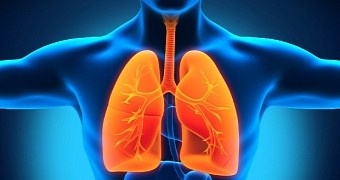A paper published in the science journal Stem Cells and Development earlier this week details the use of human skin cells to grow so-called miniature lungs in laboratory conditions.
The experiments were performed by a team of researchers working with the University of Cambridge in the UK and promise to pave the way for the emergence of new methods to study lung diseases.
What the experiments entailed
To grow miniature lungs in the lab, the team started by collecting skin cells from patients diagnosed with cystic fibrosis, i.e. a genetic disorder that chiefly affects the respiratory system and whose symptoms include difficulty breathing and increased vulnerability to lung infections.
The University of Cambridge specialists explain that what causes difficulty breathing and facilitates infections in cystic fibrosis sufferers is an accumulation of mucus in the lungs.
Having collected skin cells from several cystic fibrosis patients, the researchers exposed them to a carefully controlled environment and compelled them to become stem cells, which in turn can become any type of cell found in the human body.
The stem cells obtained were then used to recreate embryonic lung development processes in laboratory conditions. Eventually, the scientists engineered tissues mimicking real human lungs.
It is understood that the biological structures grown from the skin cells taken from the cystic fibrosis patients resembled lungs both in terms of structure and in terms of functionality. “In a sense, what we’ve created are ‘mini-lungs,’” said Dr. Nick Hannan.
Why grow such lab-made organs?
As mentioned, the University of Cambridge researchers imagine using such lab-grown biological structures resembling actual human organs to test the effectiveness of new drugs expected to treat cystic fibrosis, maybe even some other lung disease.
The scientists expect that, when compared to animal models, experiments carried out on miniature-lungs like the ones they developed would deliver more promising results. In turn, this would translate into better patient care.
“They are grown from human cells and so can be more reliable than using traditional animal models, such as mice. We can use them to learn more about key aspects of serious diseases - in our case, cystic fibrosis,” Dr. Nick Hannan explained in an interview.

 14 DAY TRIAL //
14 DAY TRIAL //